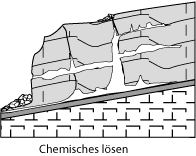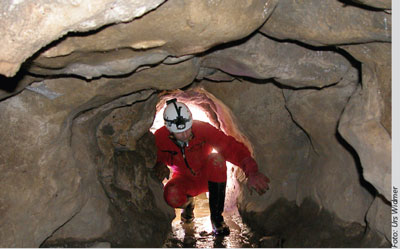
The Ibachhöhle is a small cave with a spring and has the typical elliptic profile of a bedding plane passage. The origin of the water is unknown. It probably comes from the seepage water entering the small dolines on the surface just above the cave (double doline in Schäll).
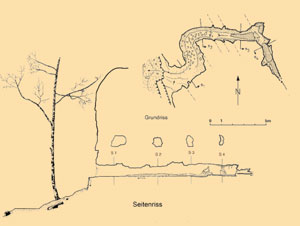
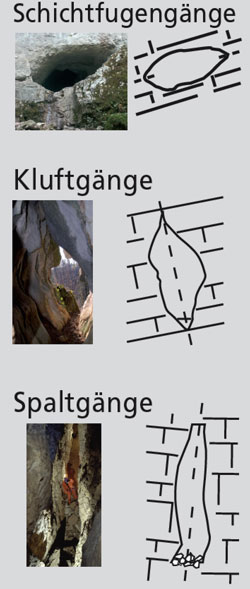

These form below water. Their profile is generally that of a flat ellipse. The entrance to Ibachhöhle is a good example of an elliptic profile. Often clefts and layers are creative elements in the formation of corridors. Clefts influence the direction of a passage, and the layers influence its horizontal course and its profile.
Cleft passages
Cleft passages are formed below water along clefts. Influenced by the drainage direction, such a passage rarely keeps only to the same cleft for any distance. Rather, the passage may change to follow a different drainage cleft or cleft system, and therefore changes direction. For these passages a tall, narrow profile is typical.
Crack passages
These passages, created by fractures that happen without corrosion are fairly widespread in northwestern Switzerland. They can be several hundred metres long and reach a depth of 35 metres. Such caves are generally found immediately at the back of prominent cliffs and run in a straight line parallel to the cliff.
Overlays
When passages such as those described above are covered by other formations during the creation of the cave, the result is often a key-hole profile or meander. A key-hole profile is created when bedding plane passage with an elliptic shape (the stem of the key) is later undermined by running water forming a ravine (the head of the key). Whereas this form of overlay is not very common in this region, the key-hole profile in alpine caves can reach a depth of 100 metres. The term ‘key-hole profile’ is derived from the shape of the cross-section of such a passage.
The most important cave types in northwestern Switzerland
We call all naturally developed cavities in the underground caves.
In our area there are two main types of caves: tectonic caves formed by rock movements and karst caves formed by limestone loosening.
Often there are combinations of both.
Typical for tectonic caves are so-called talus caves, which are parallel to the slope due to the slipping of a rock package and are usually filled loosely by falling rocks. A well-known example of this is the "Pfaderloch" cave in the climbing garden in Pelzmühletal.
Tectonic Caves. (Talus Cave)
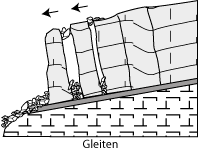
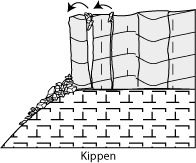
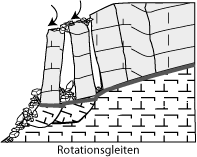 Karst caves
Karst caves
